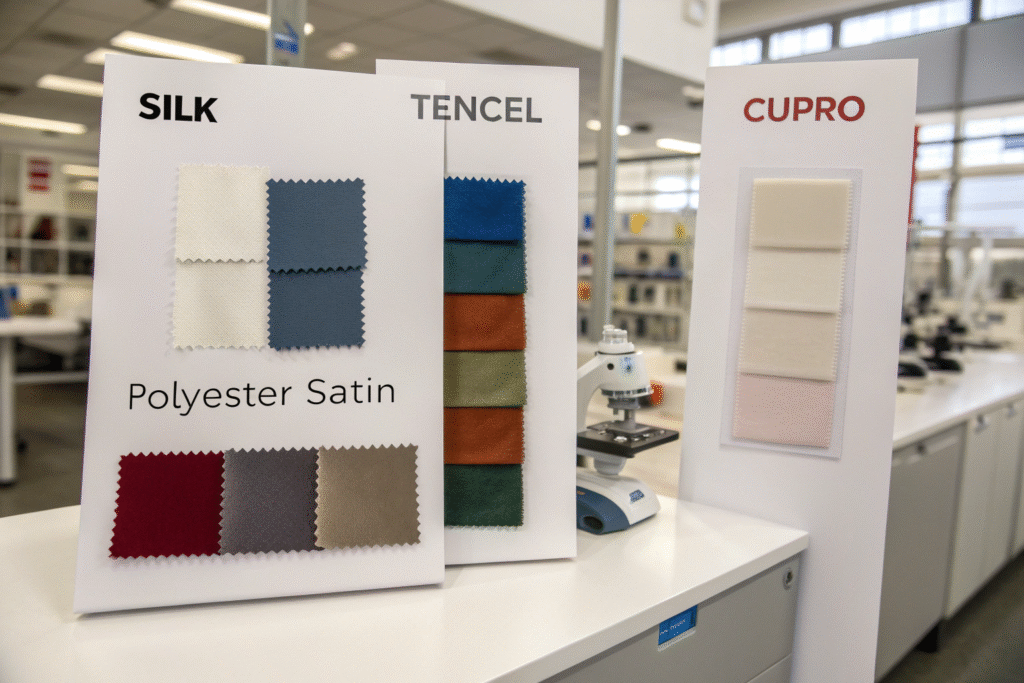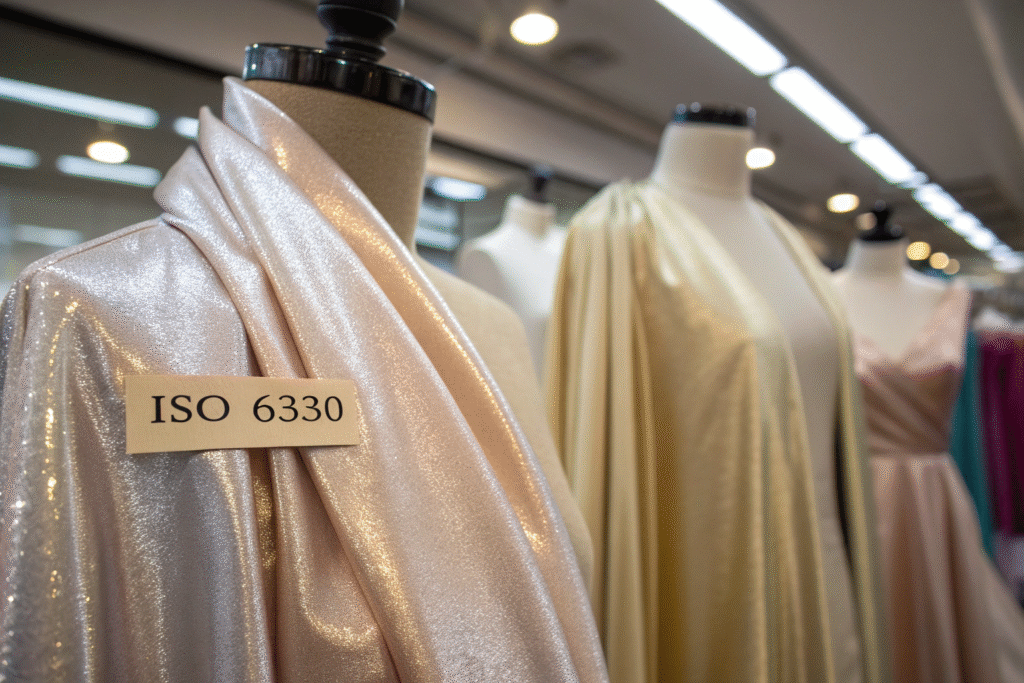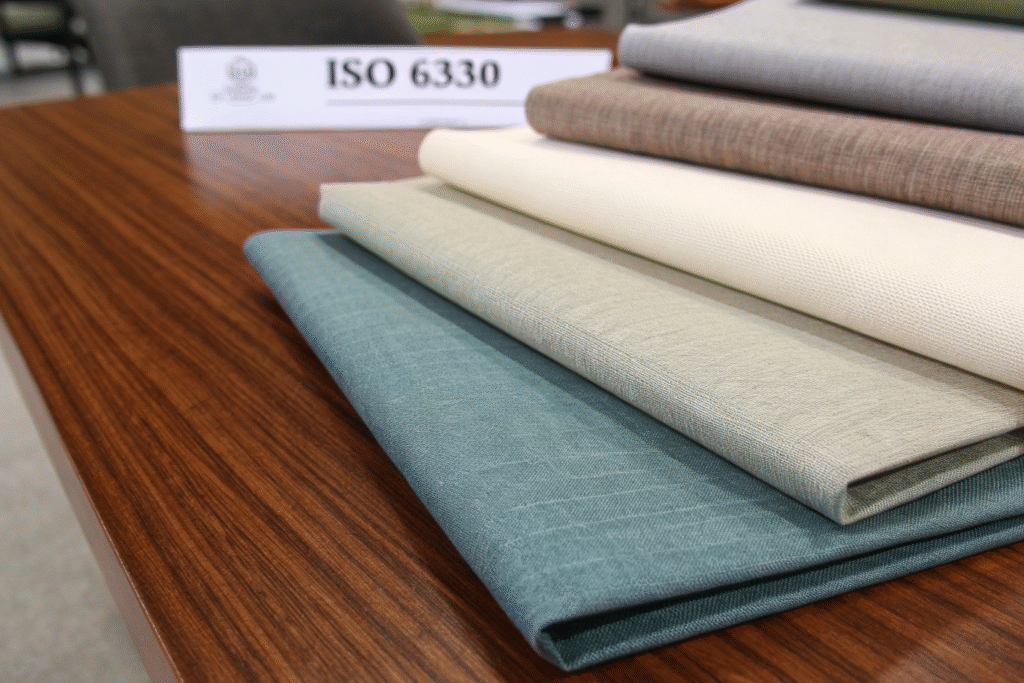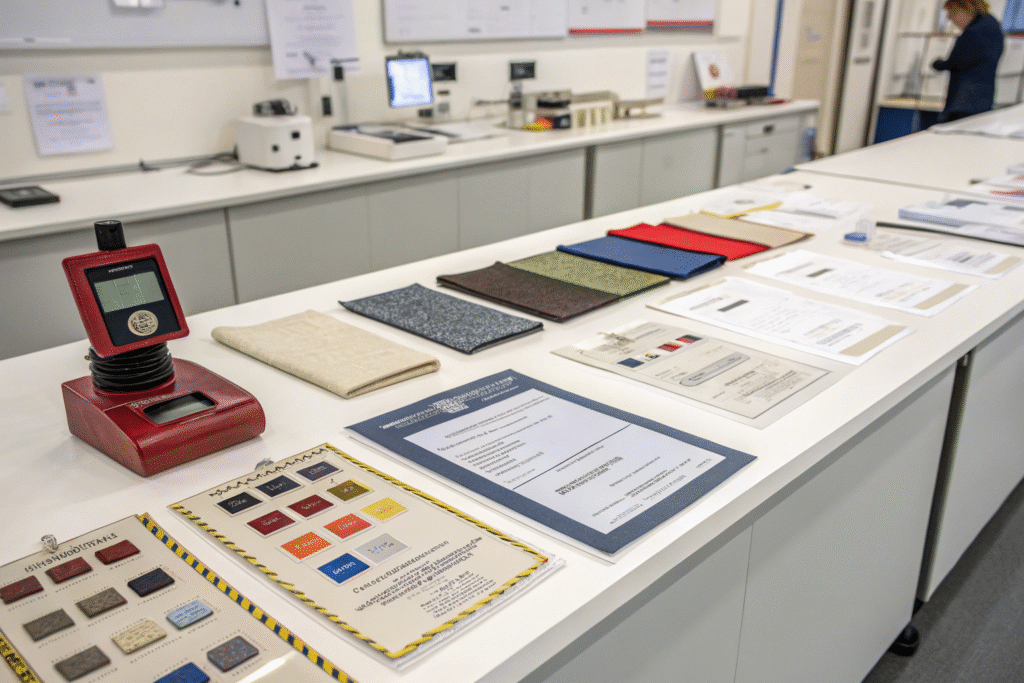Silk may be synonymous with luxury, but it’s far from perfect—especially when it comes to care. The average consumer wants beauty and durability, and today’s fabric buyers, especially from the U.S. and Europe, expect machine-washable options that won’t compromise softness, sheen, or drape. As a China-based textile manufacturer serving over 100 countries, we’ve watched this demand reshape the global fabric sourcing landscape.
If you're sourcing washable silk alternatives that meet ISO 6330 standards, you'll want to look beyond aesthetics—performance testing, fiber innovation, and compliance data are the new benchmarks.
This article breaks down what matters most when selecting ISO 6330-compliant silk alternatives. From biodegradable options to synthetic blends that feel like charmeuse but wash like polyester, we’ll walk you through the most viable fabrics that align with quality, sustainability, and logistics goals.
Which Fabrics Pass ISO 6330 and Feel Like Real Silk?
Despite many options being labeled as “silk-like,” only a few truly perform well after repeated ISO 6330 washing cycles—especially in bulk fashion manufacturing.
Tencel, Cupro, and Polyester Satin are three leading silk alternatives that retain luster, softness, and drape, while also passing ISO 6330 machine wash durability protocols.

What Makes Tencel a Sustainable Silk Substitute?
Tencel™ Lyocell is one of the most praised silk alternatives today. Made from sustainably sourced wood pulp, it has a smooth handfeel, high breathability, and elegant drape. After repeated ISO 6330 wash tests, it resists shrinkage and holds color remarkably well.
In fact, according to Lenzing, their branded Tencel fabric maintains fiber integrity even after 50+ gentle wash cycles. Many eco-fashion brands now use Tencel Satin and Tencel Twill to mimic charmeuse and crepe de chine textures.
Sourcing tip: when comparing swatches, always look for fiber certification like OEKO-TEX and request test reports per ISO 6330. We regularly help clients in Europe validate washability during pre-bulk sampling stages.
Why Is Cupro Gaining Popularity in Luxury Markets?
Cupro (also known as Bemberg) is a regenerated cellulose fabric derived from cotton linter. It has a rich, cool touch and is often used in linings, scarves, and high-end draped blouses. Unlike dry-clean-only silk, Cupro can be machine-washed under specific conditions—and most premium suppliers (like Asahi Kasei) now offer ISO 6330-compliant versions.
For fashion buyers focused on closed-loop systems, Cupro is ideal. It biodegrades naturally, and when blended with modal or viscose, offers an even smoother handfeel.
Key export markets such as France and Germany are increasingly substituting silk with Cupro-blend jacquards or Cupro viscose twills for ethical collections.
Are Synthetic Blends a Reliable Silk Replacement?
In terms of cost-efficiency and resilience, synthetic blends—especially polyester-based satins—continue to dominate in the washable silk alternative space.
Modern poly satin, charmeuse, and georgette now mimic silk’s aesthetics while boasting superior washability, making them a go-to option for fast fashion and performance wear.

Can Polyester Satin Really Compete with Real Silk?
Surprisingly, yes. Thanks to advancements in filament spinning and surface calendaring, polyester satin now mimics mulberry silk’s gloss. What’s more, this material doesn’t wrinkle as easily and retains sheen even after 20+ home machine washes.
Many of our U.S. customers in bridalwear and lingerie segments rely on polyester charmeuse for its cost savings and low maintenance. It's especially valued in the Amazon D2C space, where customer reviews often hinge on machine wash durability.
For example, high-density poly satins from Textile Exchange-compliant mills offer anti-yellowing coatings and fade resistance, which are critical for e-commerce fashion.
What Role Does Spandex Blending Play in Silk Alternatives?
Blending polyester with spandex (elastane) can dramatically increase a fabric's flexibility while preserving its elegance. Think of stretch satin or silk-like mesh used in activewear and intimate apparel. These blends often pass ISO 6330 at 40°C with no visible degradation.
Moreover, for brands aiming at adaptive fashion or curve-inclusive lines, the added stretch makes garments more wearable and reduces return rates.
We advise sourcing spandex-poly blends with WR (water repellent) finishes for maximum versatility. Be sure to ask for both ISO 6330 wash test data and Martindale rub test scores during selection.
How Do Washable Silk Alternatives Impact Garment Design?
Fabrics that pass ISO 6330 change how designers approach construction, trims, and end-use markets.
From bias cuts to piping, washable silk substitutes allow for more freedom in design—without the limitations of dry-clean-only care tags.

Does Bias Cut Work Well with These Alternatives?
Yes—but it depends on fabric structure. Tencel Satin and Cupro Twill both drape beautifully for bias cuts. We’ve supported brands in the resortwear and eveningwear sectors using these alternatives for fluid dresses and wrap tops.
When designing, always test shrinkage post-wash. Even ISO 6330-approved fabrics like Cupro may shrink up to 2–4%, which impacts sizing. We recommend pre-wash testing during the patternmaking stage—something our Keqiao lab can support within 72 hours.
Explore more details about bias cut techniques and how different fabrics respond to them.
Are These Fabrics Compatible with Heat Transfer Printing?
Absolutely. Compared to silk, which is heat-sensitive, poly satins and Tencel blends often work better with sublimation and foil printing. We regularly help buyers integrate washable alternatives into digitally printed scarf collections and custom uniforms.
We’ve also developed anti-bleed coatings that prevent dye migration during print curing. This helps maintain sharp motifs and long-term wash durability, as verified under ISO 6330’s colorfastness to laundering sub-tests.
If you’re looking for inspiration, brands like Printful have embraced poly satin for custom products that ship worldwide.
What Compliance and Certification Matter for These Fabrics?
Sourcing isn’t just about performance or price. Compliance to international standards is essential for crossing borders, especially in the U.S. and EU.
ISO 6330, OEKO-TEX, and GRS certification are the three most critical verifications buyers request when evaluating silk alternative fabrics.

Why Is ISO 6330 Compliance Non-Negotiable?
ISO 6330 is the global gold standard for domestic washing procedures. It covers all aspects of fabric durability—from shrinkage to seam slippage to print fastness. For large-volume buyers, especially sourcing for multi-season apparel, passing ISO 6330 is key to avoiding post-delivery disputes.
In fact, platforms like UL Prospector and SGS’s testing portal allow brands to cross-check test validity. We help our clients submit wash-tested swatches to certified labs before committing to bulk production.
What Role Do Eco-Certifications Play in Silk Alternative Selection?
Today’s buyers want proof—not promises. OEKO-TEX 100 guarantees safety from harmful chemicals, while GRS ensures recycled input validity. These are especially vital when sourcing Cupro, Tencel, or poly blends for EU clients facing stricter import regulations.
We recommend asking for QR code-enabled traceability on all eco-certified fabrics. Fumao offers this tech via our in-house quality center, linking test reports to each batch—a critical tool during audits or customs inspections.
Explore the growing importance of eco-certification in sustainable sourcing.
Conclusion
In today’s fast-paced sourcing world, washable silk alternatives are no longer a niche—they’re a necessity. From elegant Tencel and biodegradable Cupro to tech-enhanced poly satin blends, there are now reliable and ISO 6330-tested solutions that align with both aesthetic and functional needs.
If you're looking to integrate silk-like fabrics into your brand without compromising care convenience, we at Fumao Fabric are here to support you. Our Keqiao-based team can guide you from swatch sampling to bulk-ready certified options with full QC traceability.
Ready to source ISO 6330-compliant washable silk alternatives for your next collection? Contact our Business Director Elaine at elaine@fumaoclothing.com and we’ll help you start your journey toward low-risk, high-performance silk substitutes that meet global buyer standards.










